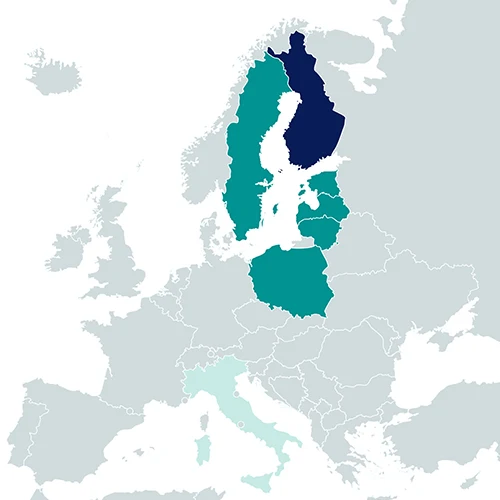2023-01-01 to 2025-12-31
Approx. 900 thsd. EUR
Kari Lehtonen
-
Sea and Water Solutions – Marine Research Centre, Finnish Environment Institute, Helsinki, Finland
-
Department of Marine Systems, Tallinn University of Technology, Tallinn, Estonia
-
Department Of The Environment Of Life And Science, Polytechnic University of the Marches, Ancona, Italy
-
Laboratory of Ecotoxicology, Nature Research Centre, Vilnius, Lithuania
-
Marine monitoring, Latvian Institute of Aquatic Ecology, Agency of Daugavpils University, Riga, Latvia
-
Marine Chemistry and Biochemistry Department, Institute of Oceanology, Polish Academy of Sciences, Sopot, Poland
-
eDNA laboratory, SeAnalytics AB, Bohus-Björkö, Sweden
-
Department of Biological and Environmental Sciences, University of Gothenburg, Gothenburg, Sweden
-
Environmental Science, Stockholm University, Stockholm, Sweden

Chemical pollution represents one of the main threats to the Baltic Sea marine environment, negatively affecting the health of its biota and vital ecological functions, and endangering its biodiversity. To achieve good environmental status, regulatory efforts, such as the EU Water and Marine Strategy Framework Directives, rely on ecological and chemical assessments. However, the essential link between the chemical assessment, based on the concentrations of contaminants, and ecological assessment, based on the status of communities, is the assessment of the biological effects of contaminants, and this is currently largely missing from the frameworks. Moreover, the chemical assessment alone is insufficient for protecting wild populations since it considers only selected and few substances, thus neglecting numerous other potentially harmful chemicals as well as the hazards related to contaminant mixtures. Increasing evidence shows that effect-based methods such as biomarkers and bioassays can provide a powerful tool to discriminate chemical toxicity from other possible causes of biodiversity decline and serve as an early warning of the potential threats.
The Detect2Protect project examines the relationships between chemical contamination and loss of biodiversity, and provides tools for risk assessment in different parts of the Baltic Sea marine environment. The key objective is to facilitate the implementation of novel approaches for integrated chemical-biological monitoring and assessment frameworks. The project aims at (i) improved understanding of cause-effect relationships between environmental pollution and changes in biodiversity and ecological status, (ii) methodological advances in biological effect assessments to prevent adverse effects on biodiversity, including a diagnostic toolbox and predictive models to classify the contamination status, and data integration methodologies, (iii) developing effect-based methods based on early warning monitoring strategies with links to the health and biodiversity of marine ecosystems, and (iv) strengthened interactions at regional and European level in the field of impact assessment of marine pollution by dissemination of knowledge.
Existing monitoring and research data on chemical contaminants, biological effects and biodiversity will be collated from selected areas of the Baltic Sea to produce predictive modelling tools. New data will be collected from pilot field sites in coastal areas of Poland, Latvia, Lithuania, Estonia, Sweden and Finland, comparing polluted and reference sites. DNA metabarcoding will be applied for assessing biodiversity and examined against data on chemical and biological effects. At the policy level, Detect2Protect aims especially at facilitating the implementation of novel monitoring and assessment methodologies, with outputs directly related to the goals of the Helsinki Commission and the implementation of its Baltic Sea Action Plan 2021, by developing guidance materials and an assessment tool, made available also for other Regional Sea Commissions. Key findings will be conveyed to researchers, stakeholders and the general public via the project webpage, periodical e-newsletters, an international workshop for key stakeholders, and a Policy Brief. Smaller national workshops elaborating the project outcomes with a more local perspective will also be organised.